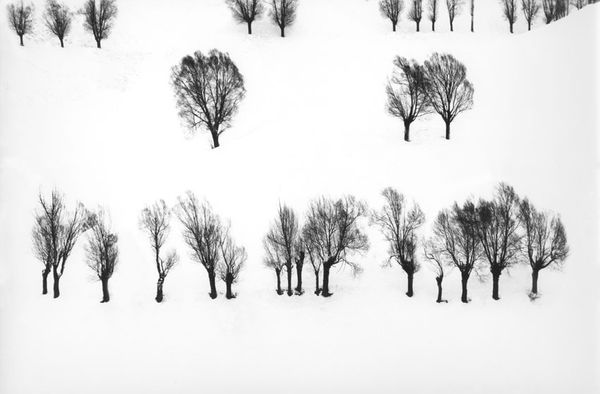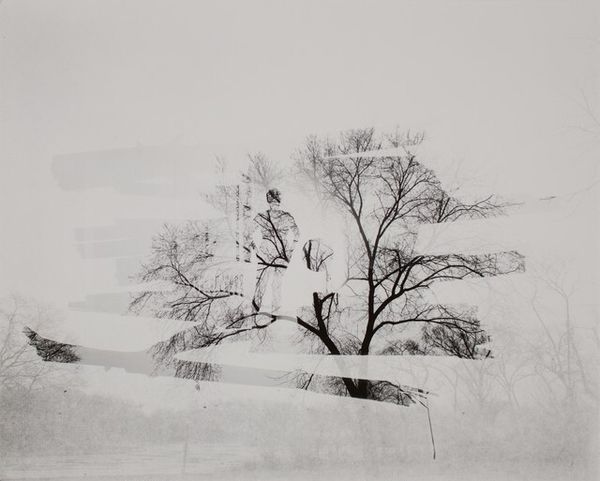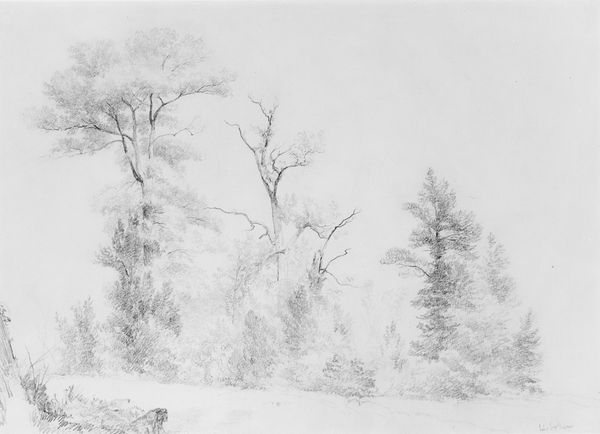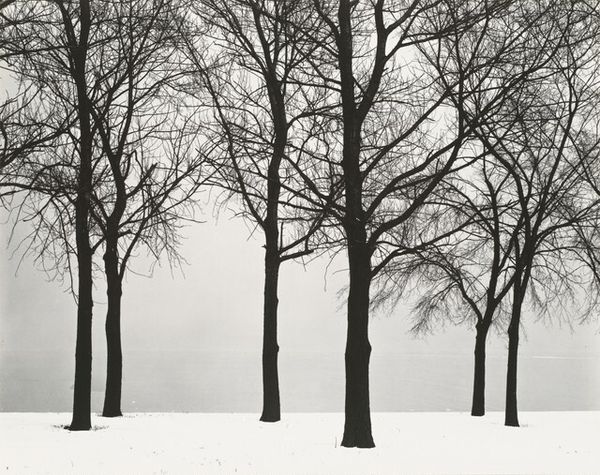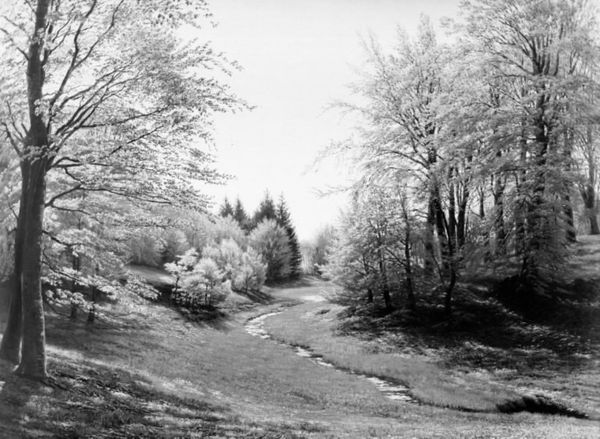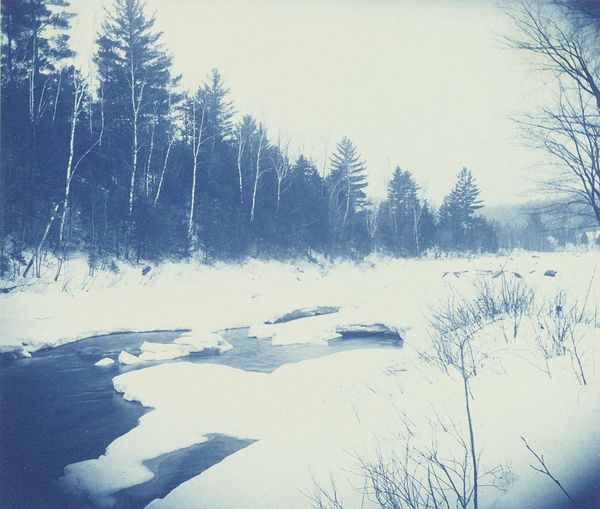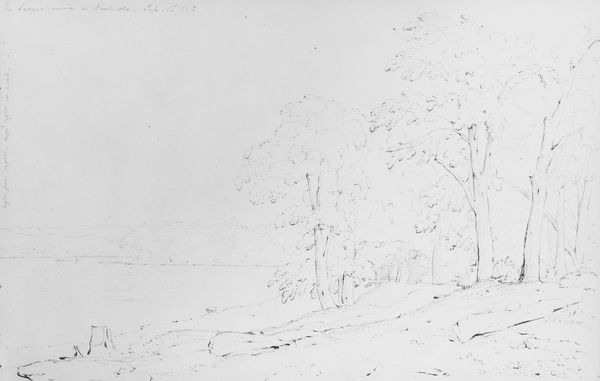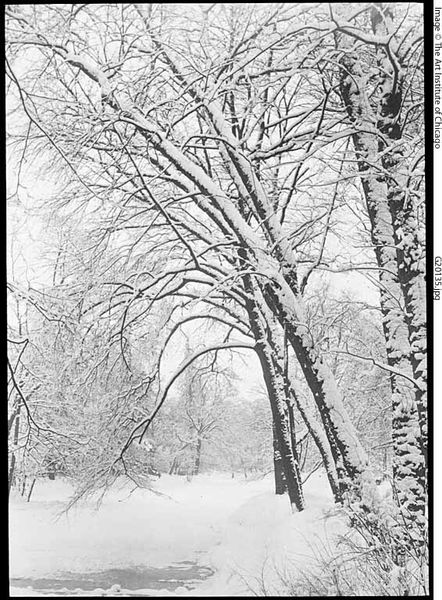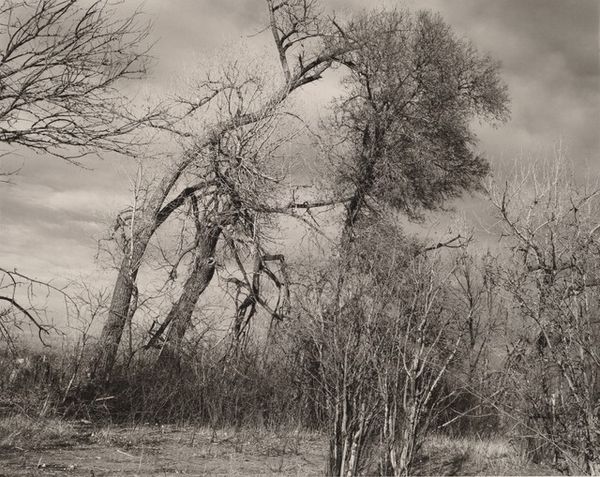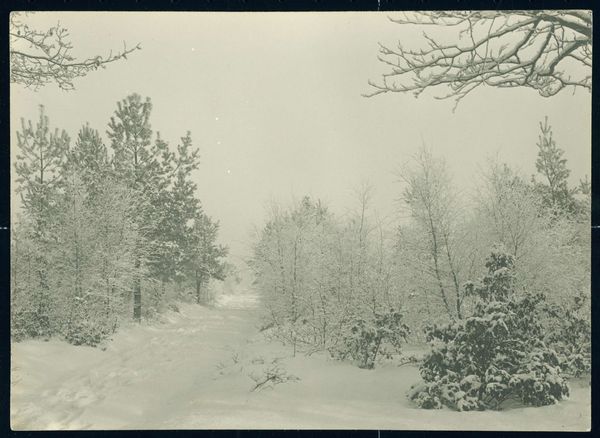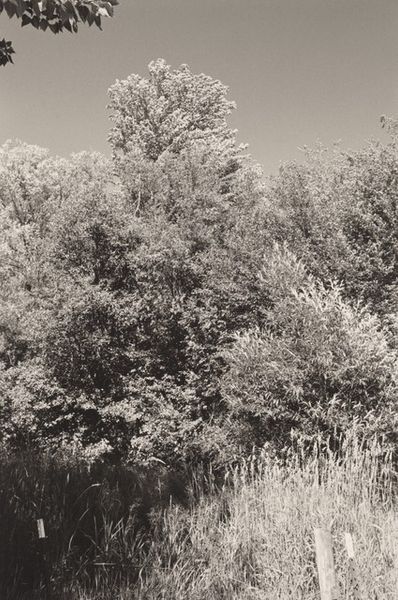
Young Oaks, Winter, Yosemite National Park, California after 1938
0:00
0:00
Dimensions: image/sheet: 19 × 24.5 cm (7 1/2 × 9 5/8 in.) mount: 34 × 41.5 cm (13 3/8 × 16 5/16 in.)
Copyright: National Gallery of Art: CC0 1.0
Editor: Here we have Ansel Adams's "Young Oaks, Winter, Yosemite National Park, California," a gelatin-silver print made after 1938. I'm immediately drawn to the stark contrast and the way the snow clings to the branches, creating a delicate, almost lace-like pattern. What do you see in this piece from a formalist perspective? Curator: The image presents a study in contrasts: the dark, vertical thrust of the tree trunks against the flat, expansive field of snow. Note how Adams carefully arranges the trees, avoiding strict symmetry, but creating a balanced composition through their relative placement. Editor: So it's less about the "winter wonderland" aspect and more about the visual relationships at play? Curator: Precisely. The bare branches, laden with snow, function as intricate lines that guide the eye. Observe the texture created by the gelatin-silver print. It accentuates the tactile quality of the bark and the softness of the snow. The lack of color further enhances our focus on form and tonal variations. Editor: I see. It's as if the photograph reduces the landscape to its essential elements, almost like an abstract drawing. The placement of the trees creates an internal rhythm and counter-rhythm within the picture plane. Curator: Exactly! Consider the semiotic potential in how light and shadow interact in creating visual signs. What statements regarding natural order might it intend through structure alone? Editor: It is interesting to move beyond the image as just a pretty photograph, and see how its impact is so dependent on the composition of lines, shapes, textures and light, all within a formal context. Curator: Indeed. The brilliance of Adams lies in his ability to transform a landscape into a rigorous exercise in visual language. We are drawn to more than just the subject alone, but by the sum of each of the meticulously arranged compositional details that it takes to produce the overall structure.
Comments
No comments
Be the first to comment and join the conversation on the ultimate creative platform.
